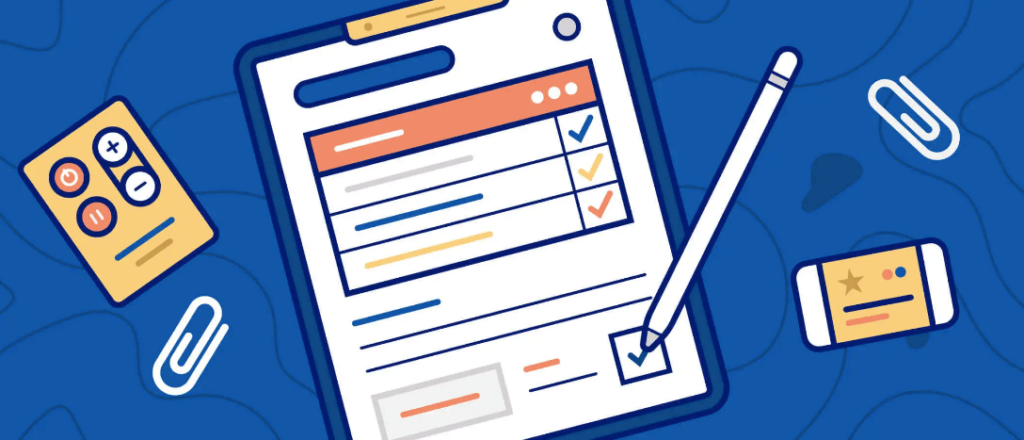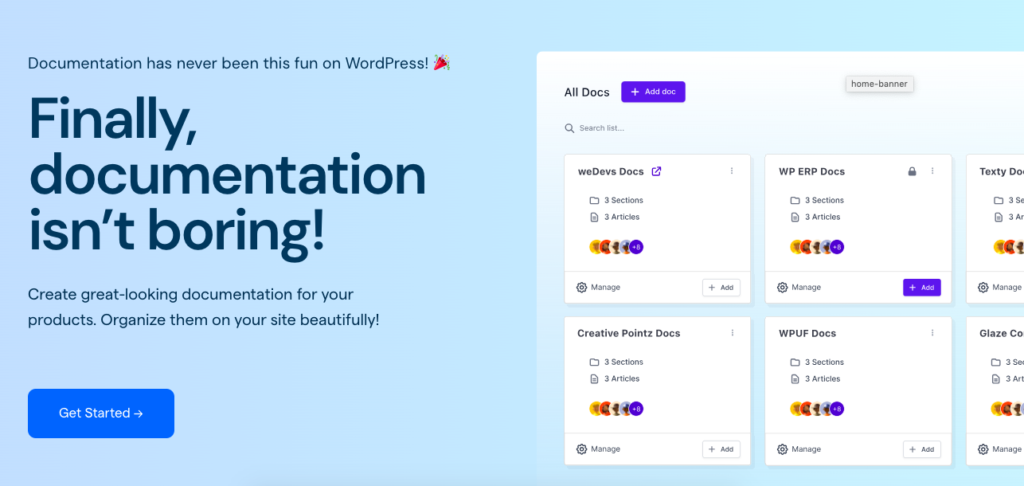Does ‘Writing product documentation’ sound dull to you? If yes, don’t be upset. It’s a common-case scenario for people who just getting started.
Every user understands the sheer importance of good documentation before using a WordPress or SaaS tool. And writing it isn’t like ‘barely an inconvenience’ but the opposite if you don’t know how to initiate the process.
Whether you are a technical writer, product owner, or software engineer, writing documentation will be fun if you follow the best practices. There are ways to learn from other people’s experiences, examples, and tools.
In this article, we will discuss a set of documentation best practices followed by top WordPress product developers. By the time you finish reading, you will be able to write and create better product documentation for your WordPress themes and plugins.
An understanding of Why you Need Documentation

Suppose you are a product owner, and a superb team has developed your product over the years. And, suddenly you discover only a few older members left in the team. Most of the people are new and having a hard time connecting the dots.
To help these new developers, understand the earlier work process and keep track of the product’s journey – documentation is necessary.
You can call it internal documentation which you should create as early as possible when you start developing a product. Yes, of course, writing documentation is a never-ending process.
And, there is another kind of documentation that features how to use the product and shows detailed technical aspects and onboarding of your WordPress product to a customer. It’s called external documentation or product documentation for customers, users, and enthusiasts.
Both of them are essential to help understand your product and they serve all the parties involved whether in development or end users.
Before You Jump into the Documentation Best Practices
As this blog is specifically designed for WordPress product users, perhaps it’s wise to comprehend how it helps potential customers get more of your plugins and themes. Here we’ve gathered some utmost reasons that make documenting so important –
Smooth Onboarding: Documentation helps your user to know how your tools function, and how to use them with full potential. Thus it increases the accessibility of your plugins or themes.
Guidance and Support: If a user needs anything after they purchase your plugin or even to use the free version – it’s documentation. A cornerstone of your WordPress tools. If you are able to create a well-guided step-by-step documentation for WordPress end users, it will only increase your popularity and brand value.
Proof of Commitment: A rich and simple product doc is a sign of your seriousness. It shows how much you are committed to the customer/user to ensure the best.
Documentation Best Practices for Your WordPress Plugins

Source: Clever Tap
Read the Existing Docs (If there is any)
Remember that Stephen King quote? ‘To write is human, to edit is divine.’ Editing is what you call reading the stuff in line and between the lines to see if it needs changes, and where to make those changes.
If you are going to update an existing WordPress product documentation or knowledge base, you ought to read it thoroughly. Thats your first job. Yes, it could be tedious. But trust me, you will enjoy it when you find out the silver linings throughout the process – and, writing product docs has many of them.
Well, what to look for while reading? Let’s note them down –
Check for the structure of the writing. Like – how the documentation started and developed over time. You can follow this pattern if it fits even today, or explore newer patterns to make it more accessible.
The most important thing is understanding how the documentation tree is designed with different categories and branches, how well-detailed are the explanations, images, diagrams, and overall coherence of the elements.
However, if you don’t have an existing doc for your product, the best thing is to read similar knowledge base/docs of other products that are already there in the market. And, note down the crucial findings in a Google sheet to implement your learning while writing your stuff.
Identifying Key Things for Your Documentation
Only a well-organized workflow can take a project to success. Before starting to write the docs, it’s necessary to identify the key things you must include and exclude. It helps you keep your writing precise and nuanced.
Document how your software works needs a well-planned structure. So, sorting out all the aspects and setting a clear vision is what you should look at more closely. Here are some considerations for you –
- Try to identify the concepts of the documentation your reader would easily connect. Do you need all of them to explain or do you want to link up third-party resources? Our suggestion is simple: write all the things your user may require.
- Which steps should you design to introduce your reader before getting started with your docs? Find them out.
- What is the goal of your documentation? How much do you think your readers will achieve after they complete reading?
- If you are documenting a WordPress plugin or theme, which version you are featuring in the doc? If you only showcase the pro version, design your documentation that way. If you want to feature the free and pro version, the structure and coverage will be bigger.
In this step, you can get help from an industry expert, read whatever you can, and gather resources to learn. This learning gonna help you to provide a better UX to the user.
Therefore, if you are an expert, try to connect the missing dots between you, the WordPress tools, and your audience.
Read the Style Guide to Create Your Own
A style guide for writing documentation is a set of guidelines and standards that help ensure consistency, clarity, and readability in written materials. If you are documenting software, products, processes, or any other subject matter, a well-defined style guide can make your documentation more effective and user-friendly. Here are some key elements to consider when creating a style guide for writing documentation –
- Audience Definition: Understand your target audience. Know their background, knowledge level, and specific needs. Tailor your writing style and content to meet their expectations.
- Document Purpose: Clearly define the purpose of your documentation. Are you providing instructions, reference material, troubleshooting guides, or a combination? Your purpose should drive the content and structure of your documentation.
- Tone and Voice: Choose a consistent tone and voice. For most technical documentation, a formal and professional tone is suitable. Avoid jargon or overly casual language unless your audience expects it.
- Formatting and Structure: Establish a consistent format and structure for your documents. Consider elements like headings, subheadings, bullet points, numbering, and indentation. This helps users navigate the document easily.
- Typography and Fonts: Specify font types and sizes for headings and body text. Ensure that your choice of fonts and typography is easy to read both on digital screens and in print.
- Grammar and Punctuation: Provide guidelines for correct grammar, punctuation, and writing style. Define how to handle common issues like sentence structure, capitalization, and abbreviation.
- Language and Terminology: Maintain a consistent use of language and terminology throughout your documentation. Create a glossary of key terms and acronyms. Ensure that all contributors use the same terminology.
- Visual Elements: Describe how to include images, diagrams, and other visual aids. Explain the preferred file formats, resolution, and size for images. Ensure that visuals are accessible to all users.
- Code and Syntax Highlighting: If your documentation involves code or technical syntax, specify how the code should be formatted, highlighted, and presented. Use a monospaced font for code snippets and provide clear examples.
A style guide for writing documentation should be a living document that evolves as your project and audience change. It ensures that your documentation is consistent, clear, and effective, ultimately making it more valuable to your users.
Documenting a WordPress Plugin
Documenting a WordPress plugin is crucial for helping users understand how to use your plugin effectively and for providing support when they encounter issues. The documentation process for a WordPress plugin typically involves the following steps:
1. Planning
- The first step is identifying the key features and functionality of your WordPress plugin.
- Then determine the target audience for your documentation (e.g., developers, site administrators, end-users).
- Decide on the format of your documentation (e.g., online user manual, readme.txt file, dedicated website, video tutorials).
- Consider the structure of your documentation, such as sections, chapters, and topics.
- Create an outline of the content you intend to cover.
2. Documentation Content
Here are the three crucial steps you must follow one after another –
a. Readme.txt File: This is the first point of reference for users when they install your plugin from the WordPress Plugin Repository. It should contain essential information, including the plugin name, description, installation instructions, usage instructions, and screenshots.
b. User Manual or Online Documentation: For more detailed information, create user documentation that provides comprehensive guidance on how to use your plugin. This may include how to configure settings, use features, and troubleshoot common issues. Consider including sections like Getting Started, Configuration, Features, Troubleshooting, and Frequently Asked Questions (FAQs).
c. Developer Documentation: If your plugin is intended for developers, provide detailed documentation on how to extend and customize your plugin. Include information on hooks, filters, actions, and code examples. This helps developers integrate your plugin into their themes or other plugins.
3. Content Creation
- Write clear and concise content for each document.
- Use consistent formatting, headings, bullet points, and code blocks.
- Include screenshots, images, and diagrams to illustrate concepts and steps.
- Follow best practices for writing, such as using plain language and avoiding jargon.
- Ensure that your documentation is accessible, especially for users with disabilities.
4. Version Control
Maintain a system for version control to track changes in your documentation.
Clearly indicate the version of the plugin that the documentation corresponds to.
5. Testing
Thoroughly test the instructions and information provided in your documentation to ensure accuracy.
Verify that all screenshots and examples are up-to-date and relevant to the current version of your plugin.
6. Distribution and Accessibility
Make your documentation easily accessible to users.
If your plugin is hosted on the WordPress Plugin Repository, ensure that the readme.txt file is included.
Consider hosting a dedicated website or knowledge base for more comprehensive documentation.
7. Maintenance
Regularly update your documentation to keep it current with plugin updates or changes.
Notify users of documentation updates through release notes or changelogs.
Encourage user feedback and suggestions for improving the documentation.
8. Support and Feedback
Provide contact information or support channels (e.g., support forums, email) for users who have questions or encounter issues not covered in the documentation.
Monitor user feedback and make necessary updates to your documentation based on common queries and problems.
9. Promotion
Consider promoting your documentation through social media, your plugin’s website, or relevant WordPress forums or communities to increase visibility and help users find the information they need.
The documentation process for a WordPress plugin is an ongoing effort to ensure that users can install, configure, and use your plugin effectively while also reducing the support burden on you as a plugin developer. High-quality, up-to-date documentation enhances the user experience and fosters a positive reputation for your plugin.
Implementing a Tool for Writing Better Documentation in WordPress

Cheers to the age of automation and simplification. As a WordPress user, you don’t even bother much about the design and technical difficulties while writing and creating documentation for your WordPress plugins.
You’ll find a lot of tools out there to help your site a brand new documentation that is stylish and intuitive at the same time.
Here come weDocs. One of the best WordPress documentation builders and Knowledge base plugins you could ask for.
Here’s what you can do with weDocs –
- Global doc permission feature and public/private doc creation
- Easy configuration and usage
- Powerful weDocs search option
- WordPress language plugin compatibility
- Simple and powerful customization. You can use pre-made awesome-looking templates or your very own design
- Unlimited docs and multiple knowledge base creation
- Assistant widget like AI Chatbot (Upcoming)
weDocs aimed to help developers and product users create documentation and a knowledge base for their WordPress tools like eating a pie.
Closing Up
WordPress product documentation is a valuable resource for users who rely on your WordPress product.
When well-organized, up-to-date, and accessible, it enables users to install, configure, and customize your product effectively, and it fosters a positive reputation for your product within the WordPress ecosystem. Effective documentation reduces user frustration, builds trust, and ultimately contributes to the success of your WordPress product.
Subscribe to
weDocs blog
We send weekly newsletters,
no spam for sure!
.png)
